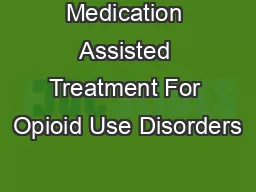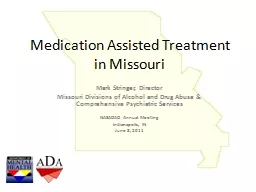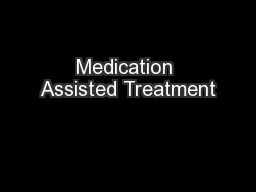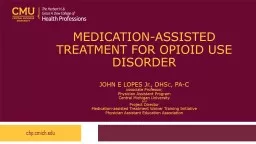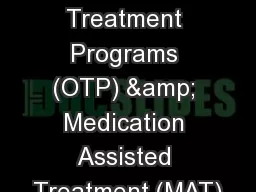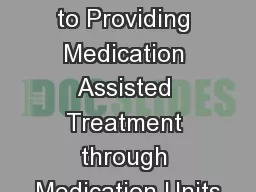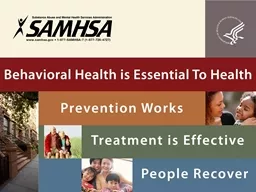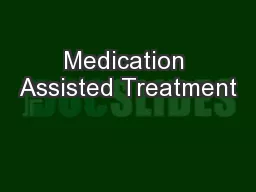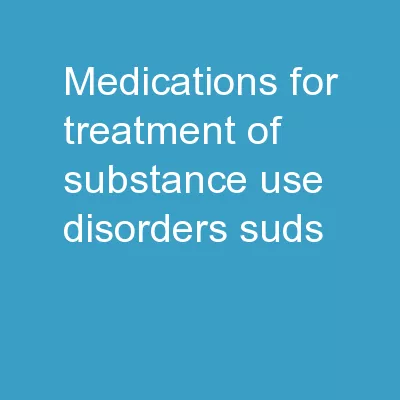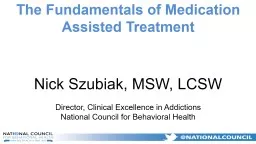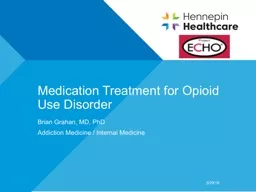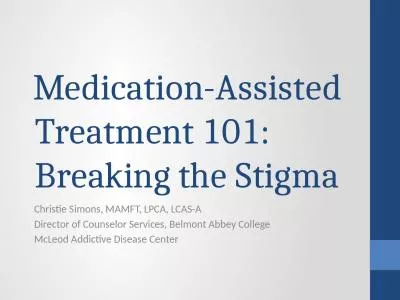PPT-Medication Assisted Treatment For Opioid Use Disorders
Author : calandra-battersby | Published Date : 2019-12-06
Medication Assisted Treatment For Opioid Use Disorders Shannon Allen MD Jade Wellness Center July 19 2018 Rates of Relapse in Opioid Use Disorders are High Benefits
Presentation Embed Code
Download Presentation
Download Presentation The PPT/PDF document "Medication Assisted Treatment For Opioid..." is the property of its rightful owner. Permission is granted to download and print the materials on this website for personal, non-commercial use only, and to display it on your personal computer provided you do not modify the materials and that you retain all copyright notices contained in the materials. By downloading content from our website, you accept the terms of this agreement.
Medication Assisted Treatment For Opioid Use Disorders: Transcript
Download Rules Of Document
"Medication Assisted Treatment For Opioid Use Disorders"The content belongs to its owner. You may download and print it for personal use, without modification, and keep all copyright notices. By downloading, you agree to these terms.
Related Documents

